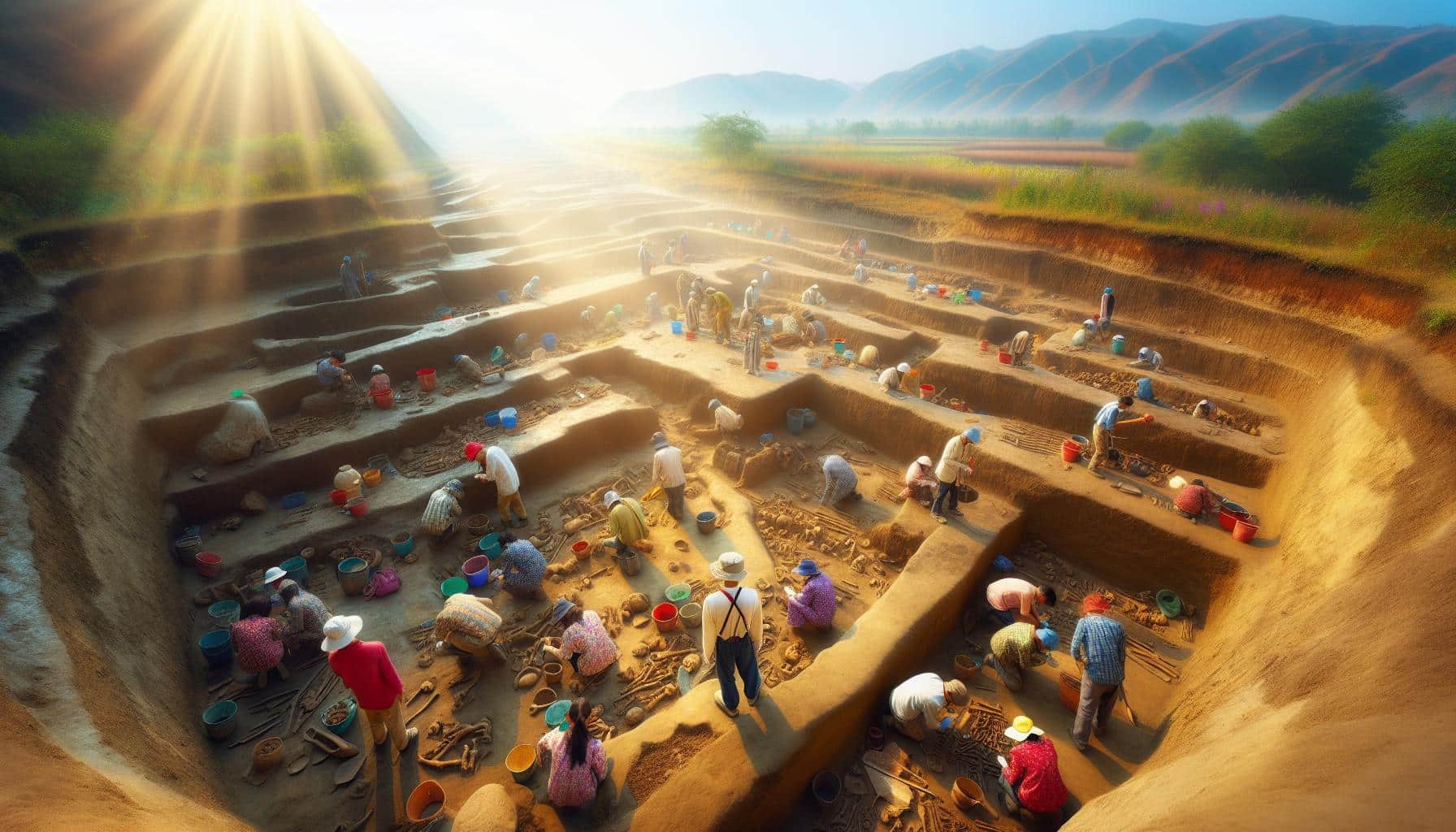Ancient Human Migration: New Evidence from Northern China
A site in northern China has recently provided new insights into the ancient human migration into East Asia approximately 45,000 years ago. This groundbreaking discovery challenges conventional beliefs about how Homo sapiens dispersed around the world. An international team of researchers conducted a thorough examination of ancient human artifacts from the Shiyu site, located near the city of Shuozhou, about 350km west of Beijing. The research findings have been published in Nature Ecology and Evolution.
Challenging Conventional Beliefs: Discovering the Shiyu Site
By utilizing radiocarbon and luminescence dating methods, the team determined that the stone and bone tools discovered at the Shiyu site are 45,000 years old. This makes it the oldest and easternmost site of its kind. The significance of this finding lies in the fact that it sheds light on the timeline and route of ancient human migration to East Asia, which has been a mystery until now.
Advanced Resource Collection: Insights into Ancient Technology
The archaeologists discovered that the ancient people at the Shiyu site had an advanced resource collection strategy. They transported obsidian from sources hundreds of kilometers away to create their tools. This indicates a sophisticated understanding of resource availability and procurement among these ancient inhabitants. The artifacts also display a mix of different technologies, such as Levallois and Volumetric Blade Reduction techniques, typically associated with the Middle Palaeolithic and Upper Palaeolithic periods. Moreover, objects reflecting core-flake crafting, dating back to about 40,000 years ago, were also found at the site.
Cultural Mixing and Adaptation: An Innovative Expansion
Remarkably, the Shiyu site reveals a convergence of different cultural traits and technologies, indicating a complex and innovative adaptation by our ancestors during their expansion. This blending of diverse cultural characteristics signifies a unique amalgamation of inherited traits and novel innovations. Dr. Shi-Xia Yang, senior author of the study and a researcher from the Chinese Academy of Sciences, highlights the significance of this cultural mixing, suggesting that it represents a process of cultural creolization and complicates the traditional understanding of Homo sapiens‘ global expansion.
Unraveling the Mystery: How and When Ancient Humans Migrated to East Asia
While it is already known that Homo sapiens migrated to eastern Asia at least 45,000 years ago, the exact timing and mode of this ancient human migration have remained elusive. The discovery at the Shiyu site now adds another layer of complexity to this mystery. It suggests that the migration process to East Asia was not a straightforward event but rather involved a complex interplay of various cultural influences and adaptations. As further research continues, scientists hope to gain a clearer understanding of the journey and settlement patterns of ancient humans in East Asia.
Analyst comment
Positive news: The discovery of the Shiyu site in northern China challenges conventional beliefs about ancient human migration to East Asia, providing new insights into the timeline and route of migration. The site reveals advanced resource collection strategies and a convergence of different cultural traits, indicating complex and innovative adaptation. As further research continues, scientists hope to gain a clearer understanding of ancient human journey and settlement patterns in East Asia.
Market analysis: This news is not directly related to the market, but it highlights the importance of archaeological discoveries in shaping our understanding of human history. It could indirectly impact sectors related to research, cultural tourism, and heritage preservation.













